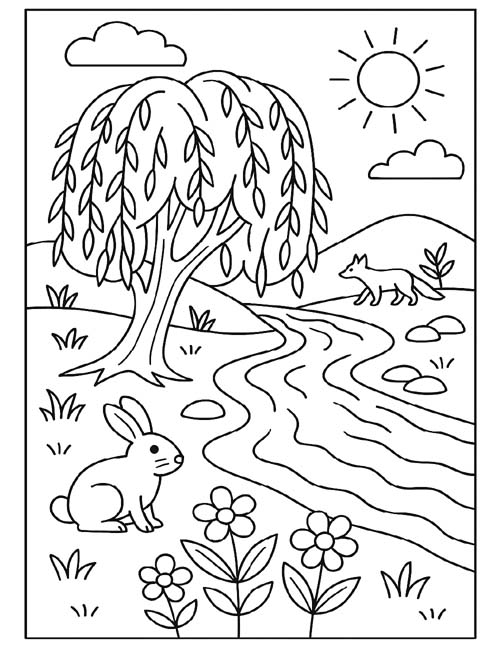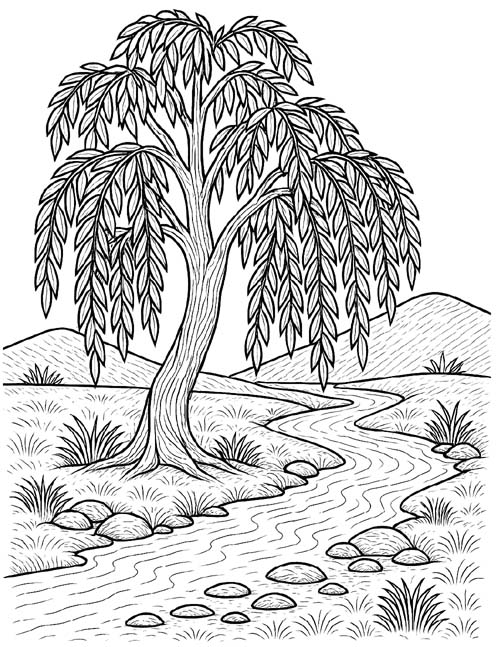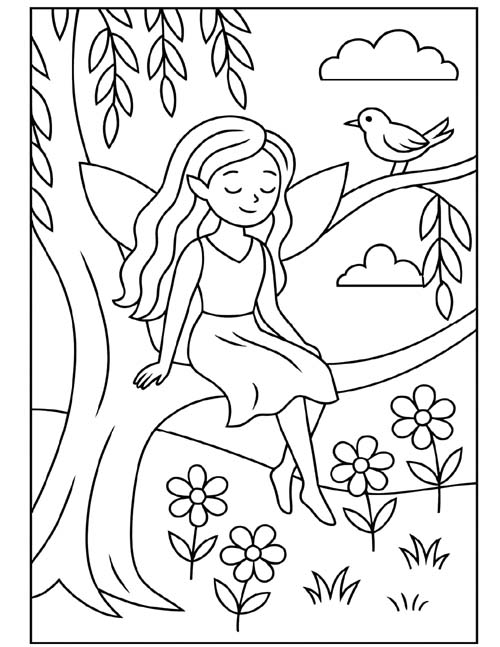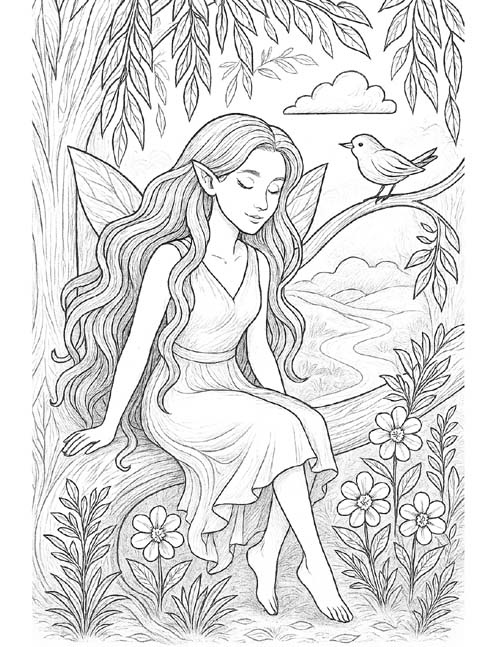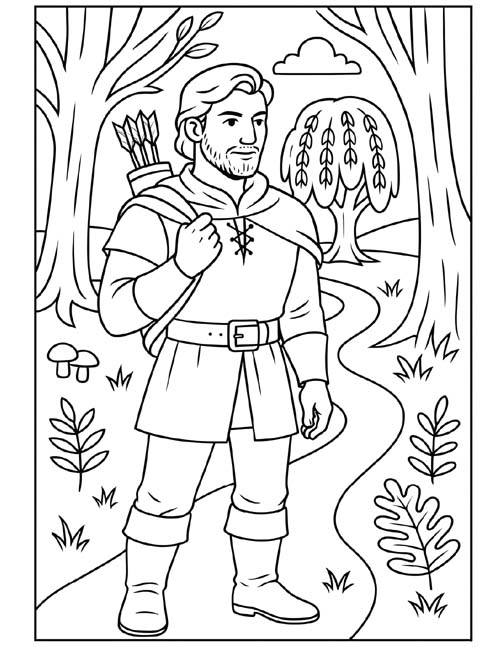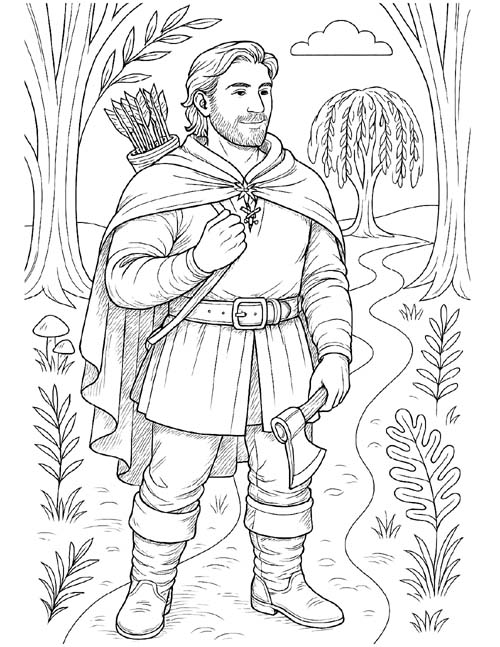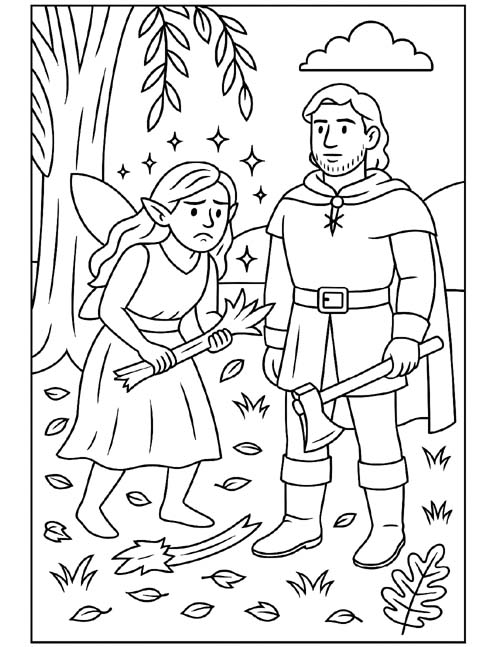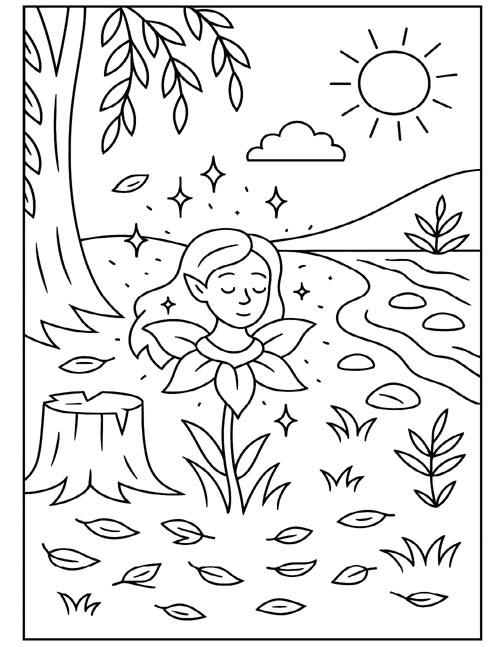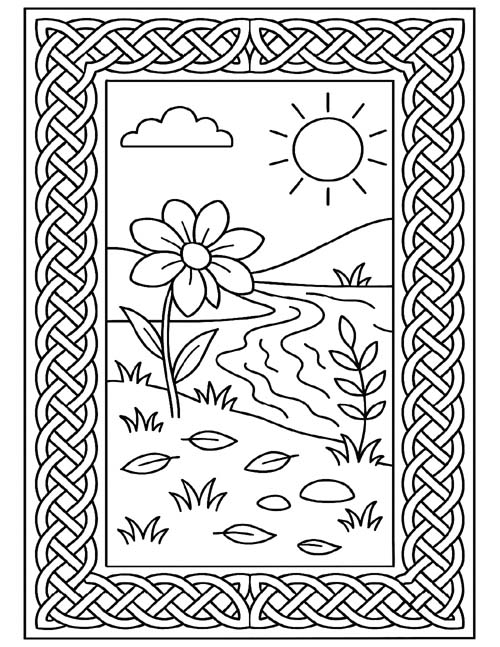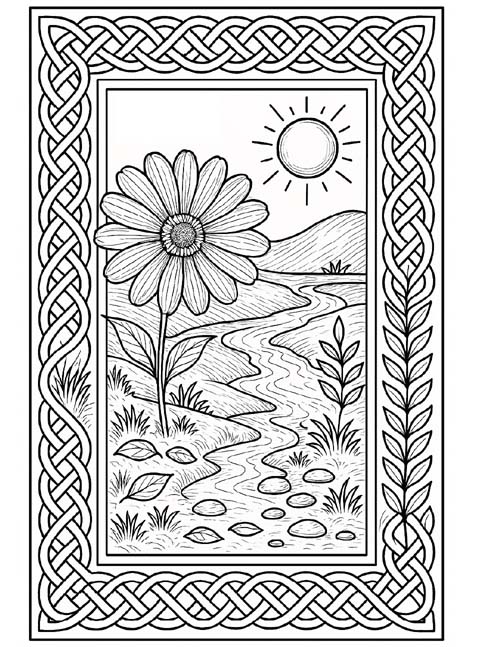DLTK's Crafts for Kids
The Willow Maiden
by Leanne Guenther, inspired by Celtic mythology.
In a quiet, whispering forest, where the river caught the sunlight and tossed it back like silver,
lived a fairy no bigger than a leaf and bright as the morning dew.
They called her the Willow Maiden. Her hair tumbled like waterfalls,
and when she laughed, the sound drifted through the branches like a song half remembered.
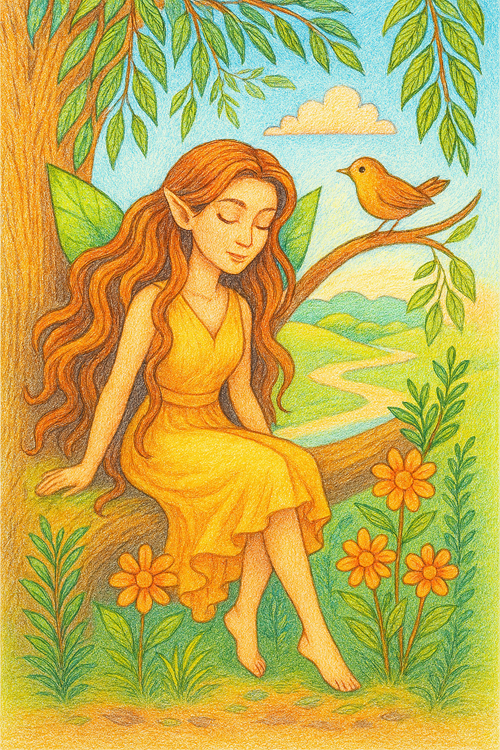 Every dawn, she brushed the blossoms awake with her fingertips.
Every dawn, she brushed the blossoms awake with her fingertips.
The birds would answer her in sweet little trills,
and even the foxes, clever as they were, would step softly past her home.
The rabbits twitched their noses, and the river, kind as an old friend,
curled around the roots of her willow tree.
Then one day, a young man wandered into the forest.
He wasn’t looking for trouble, only following the sound of humming.
And there she was, sitting among the trailing branches,
singing to herself, the air around her shimmering like heat above water.
“Oh,” he breathed. “She’s lovelier than sunlight on a stream.
If I could only keep her near me, just once, so she never leaves.”
He watched her dance and smile,
but when he asked her to come away with him, she only shook her head.
Her voice was gentle, like rain on moss.
“No,” she said. “I belong here. My home is the willow. My song is the wind. ”
The young man frowned, thinking perhaps he could help her live in his world instead.
So, foolish as people sometimes are when they want something too much,
he raised his small, sharp axe.
With one hard swing, the willow shuddered and fell.
The forest went still.
The Willow Maiden’s eyes widened, her hands clutching the branches that had held her all her life.
For a heartbeat she shimmered there,
half light, half sorrow,
and then she was gone.
Yet not gone entirely.
Where the tree had stood, by the bend of the river,
a tiny flower bloomed, delicate and bright, its petals catching the sun.
She could no longer dance in the wind,
but the breeze still kissed her, and the birds still sang her tune.
Her spirit had settled into the earth and blossomed from it once again.
The young man knelt there a long while,
his heart heavy with the kind of regret that comes only after understanding arrives too late.
But the forest, in its quiet way, forgave him.
Whenever he passed that river again,
he would see the little flower glowing in the light
and remember her laughter, her song, her grace.
For though she had changed, she was not lost.
She lives still in the whisper of the leaves,
in the shimmer of water,
and in every small, beautiful thing that grows.
Celtic Roots of the Willow Maiden
The story of the Willow Maid is inspired by Celtic folklore, where trees and forests were considered sacred and full of magic. In these tales, each tree could hold a spirit, and willow trees in particular were linked to water, healing, and the mysterious Otherworld - a place where fairies lived. Humans were warned to respect the trees and the magical beings that lived within them, because harming a tree could harm the spirit inside.
Another important Celtic tradition is the fairy bride tale. In these stories, humans sometimes meet a fairy who lives in the forest, near rivers, or under hills. The fairy might be kind and beautiful, but she cannot leave her magical home. If a human tries to take her or force her to stay, it usually ends in sorrow. The Willow Maid story draws on this idea: the man’s wish to bring her with him harms the forest and the fairy, showing that magic and nature cannot be owned.
By combining the Celtic themes of sacred trees, nature spirits, and fairy bride tales, the Willow Maid teaches respect for the natural world and its magic. Even when the willow falls, the fairy’s spirit continues in a shining flower, reminding us of the beauty that remains when we honor the forest and its secrets. The story has also inspired modern artists, including Erutan, who wrote a hauntingly beautiful song titled “The Willow Maid,” capturing the magic and melancholy of the tale.
Print friendly version of these instructions
